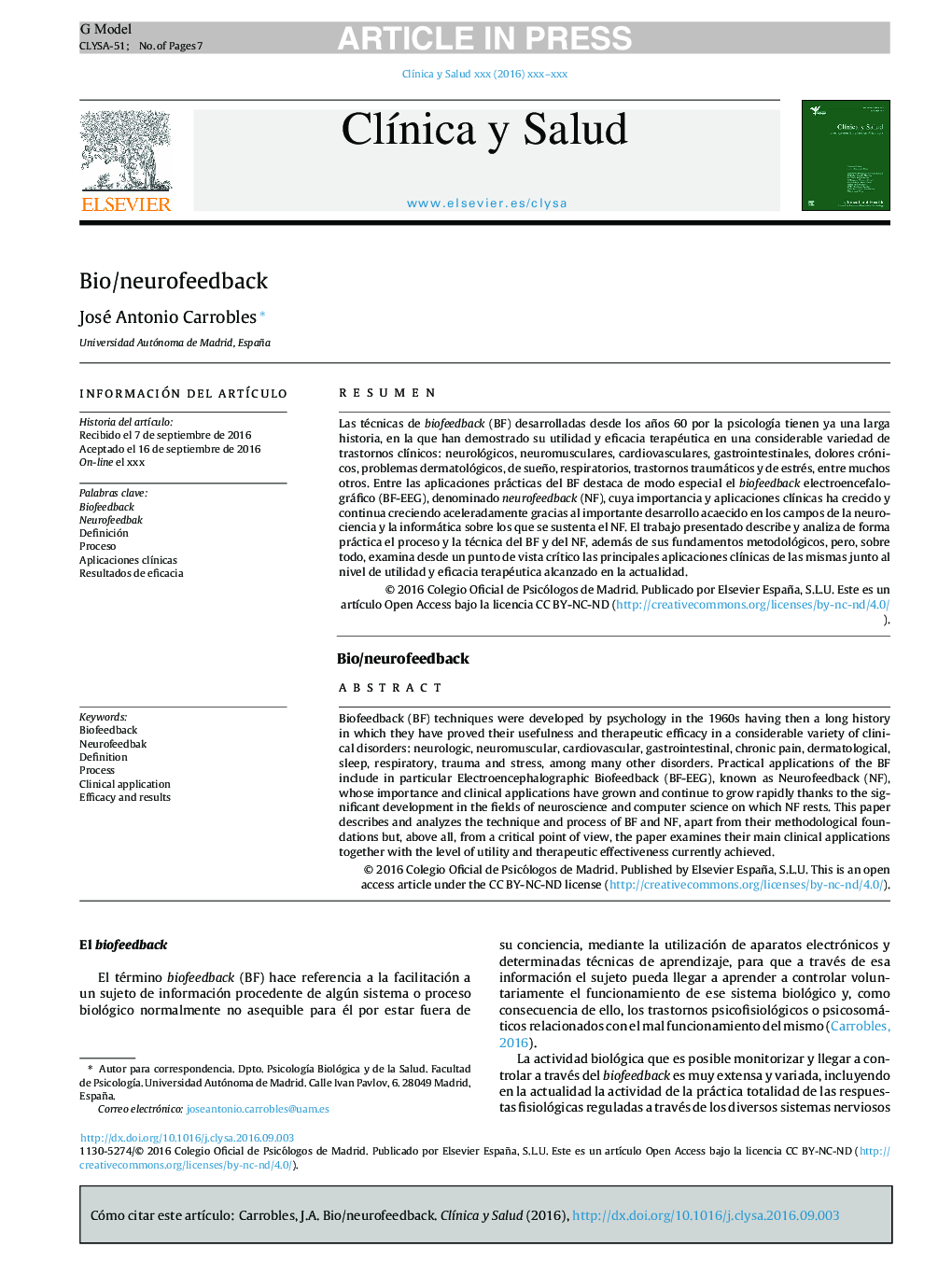| Article ID | Journal | Published Year | Pages | File Type |
|---|---|---|---|---|
| 7263290 | Clínica y Salud | 2016 | 7 Pages |
Abstract
Biofeedback (BF) techniques were developed by psychology in the 1960s having then a long history in which they have proved their usefulness and therapeutic efficacy in a considerable variety of clinical disorders: neurologic, neuromuscular, cardiovascular, gastrointestinal, chronic pain, dermatological, sleep, respiratory, trauma and stress, among many other disorders. Practical applications of the BF include in particular Electroencephalographic Biofeedback (BF-EEG), known as Neurofeedback (NF), whose importance and clinical applications have grown and continue to grow rapidly thanks to the significant development in the fields of neuroscience and computer science on which NF rests. This paper describes and analyzes the technique and process of BF and NF, apart from their methodological foundations but, above all, from a critical point of view, the paper examines their main clinical applications together with the level of utility and therapeutic effectiveness currently achieved.
Related Topics
Social Sciences and Humanities
Psychology
Clinical Psychology
Authors
José Antonio Carrobles,
